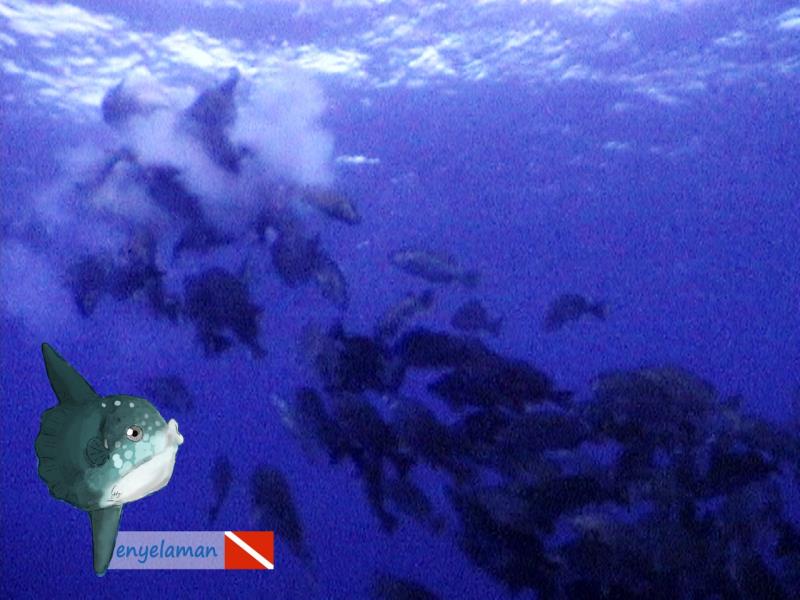 Directory of 19 Dive Sites or Spots for Scuba Diving in Glover's Reef and Southern Belize, Belize
Directory of 19 Dive Sites or Spots for Scuba Diving in Glover's Reef and Southern Belize, Belize
Part 2: Dive Sites, Marine Life & Environment in Glover's Reef and Southern Belize, (Belize)
Glover's Reef is home to steep wall dives and amazing reef and marine life. The colorful Spotlight parrotfish, Queen parrotfish and Nassau grouper are just a few of the reef fish species that have made a comeback after years of over fishing. The protected atoll and the life it harbors is a great place for scuba divers. Along the barrier reef towards the mainland Glover's Reef is the most spectacular place to dive in the southern waters of Belize.
The most famous dive site on Glover's Reef is off the seaward side of Long Caye known as The Wall. Aptly named because it is a cliff whose top is just 35 feet under the water's surface, and whose face steeply plummets 3,000 feet into the dark abyss. The amazing part of this dive site is that experienced divers can swim from Long Caye's shore to The Wall. As you boat further south along the atoll, there are other wall dives such as Middle Caye Wall and Southwest Caye Wall that are less frequented than The Wall off Long Caye. These two wall dive sites are great dives, but for advanced divers only due to the fact that the cliffs edge starts at 100 feet plus. These remote wall dives are often chartered privately with individuals or dive shops. The coral growth is amazing, especially along the cliff edge, and expect to see Giant brain coral, abundant Orange sea lily, and Red boring sponges along with lots of red algae coating coral rubble.
On the west central side of Glover's Reef is the dive site called Emerald Forest Reef. The reef tip is just about 1 foot underwater and the wall slopes down in about 50 feet of water making this dive site shallow enough for intermediate level scuba divers. In addition, the current is usually mild. This dive site is also great for snorkelers and beginner divers who are just getting their fins wet. Experienced divers will enjoy diving along Emerald Forest's wall, descending into depths where there is amazing reef life to explore.
Gladden Spit is a zone of reef and water offshore from Belize's southern coastal city of Placencia. The area is famous for its frequent sightings of the huge and gentle Whale shark. Scuba divers and snorkelers swim in the deep waters of Gladden Spit in the hope that the giants will visit them. The best times to see them are in late March, April, May and June. The Whale sharks return usually in fewer numbers between August and October, and again in late December into January. The giant's are attracted to the spawning Dog snapper and Cubera snapper. The islands known as the Silk Cayes in the southern zone of Gladden Spit are a protected “No Take Zone”, and are ideal for scuba divers. Silk Cayes Canyon offers experienced scuba divers steep walls and abundant reef life.
Less than 10 miles off the coast of Dangriga sits the Belize Barrier Reef. The experienced and brave scuba diver can hire a water taxi or private dive boat captain to explore the unspoiled reef. Coral Monument Canyon is a great dive spot to explore the reef. The small Tobacco Cayes, where tobacco was harvested, has the nearby dive site called Tobacco Channel. Here there is a natural break in the reef and abundant marine life and coral take in the current and nutrient flow. Along this section of the reef there are many established dive sites and places yet to be explored. Out off the reef it is common to see Hammerhead sharks patrolling the waters. The reefs of Belize have only started to be explored.
Read "Part 1: Overview of Scuba Diving in Glover's Reef and Southern Belize, (Belize)"
Top Dive Shops
Cities
Reviews
Dive Logs
-
andreasmuljadi Saturday, May 12, 2001
-
andreasmuljadi Friday, May 11, 2001


